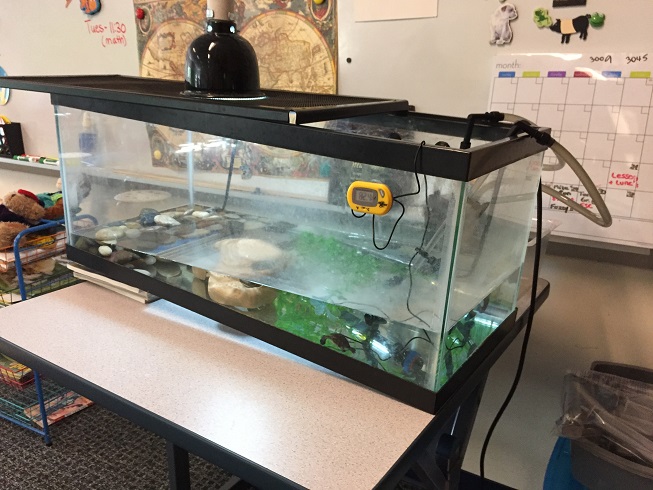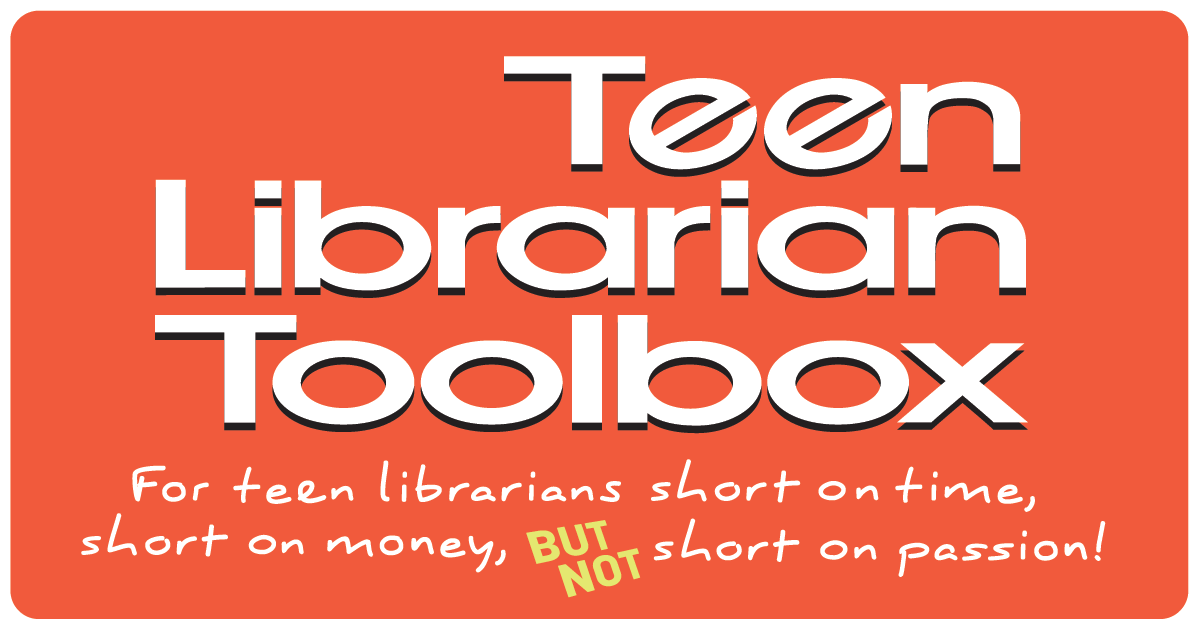Helping Turtles: Writing as Conservation Work, a guest post by Diana Renn

When my son started fourth grade at his new school, he came home talking excitedly about his two new friends. Since he’d been anxious about even entering the building, I was grateful for these two friendly classmates.
“What are their names?” I asked.
“Waffles and Pebbles,” he replied.
I hoped these were nicknames. “What are they like?” I asked. “Do you guys have common interests?”
Not a lot, it turned out. Waffles and Pebbles were into chasing pellets of food in an inch of water, hiding under moss, and basking on a rock beneath a heat lamp. They lived in a tank. They were turtles.
ADVERTISEMENT
ADVERTISEMENT

Nevertheless, my son bonded with them. He did extra work observing this pair of dark-shelled Blanding’s turtles, taking notes on their behaviors. Over the course of the year, those turtles gave him an important role in the classroom and drew him out of his shell.
Little did I know how much Waffles and Pebbles would impact my own life too, eventually inspiring my middle grade novel, Trouble at Turtle Pond.

As a parent volunteer for ecological field trips, I quickly got up to speed. Turtles certainly did have troubles. Blanding’s turtles are endangered. They have suffered significant population decline through predators, habitat fragmentation, and wildlife poaching. Road crossings are particularly perilous when females look for nests and, later, when hatchlings emerge.
In our town, a national wildlife refuge is home to 50-60 adult Blanding’s turtles. That number is down from over 100 in the 1970s. Our town’s schools are part of a network of thirty Massachusetts schools that headstart Blanding’s turtles in partnership with Zoo New England’s Field Conservation Department. Kids and their teachers care for hatchlings starting in the fall. They release them back to the pond in the spring when the hatchlings are bigger and better able to survive. They come into classrooms about the size of small cookies and grow to the size of hamburgers. That’s at least four times as big as they would be if they were left to hibernate in the wild through the winter. The size difference makes them a less tempting snack for predators, with stronger shells.
The enthusiasm of the kids and teachers as turtle advocates in fourth grade was infectious. Kids sold crafts and hosted a turtle night to raise hundreds of dollars for the conservation group. They educated the community. They did hands-on work to prepare the turtles for spring release, even introducing them to bugs and vegetation they would encounter in the wild. As a writer, I knew there was a story to tell here. I wanted everyone to know about these magnificent turtles, and the network of people who were giving them a head start in life. But what kind of story would I tell?
When the school year ended, and Waffles and Pebbles were released, my son wanted to keep helping turtles. Since turtles had helped him, I was fully on board with that idea.
We joined the conservation group to track nesting females using radio telemetry. We listened for the beeps responding to tracking devices glued to the adult female turtles’ shells. Biologists could protect and monitor their nests until hatchlings emerged three months later. Roaming around at dusk with all this equipment activated my mystery writer’s imagination. What would this activity look like to someone witnessing it for the first time? The turtle tracking scene became a pivotal moment in my novel.
Next, my son and I signed up to be a foster family for hatchlings. We hosted ten tiny turtles in our guest bedroom for a month. The hatchlings lived in a plastic bin tilted on one end on a card table. We marveled at their tiny claws and eyes, their little tails, and the egg tooth – a translucent sliver on the end of their beak that was used to break their way out of the eggs. I wanted to convey the joy and responsibility of caring for such tiny, fragile creatures. In my novel, a girl named Pia has two in her care for the summer. She and her friends arrange the habitats and check on them constantly, until one night the turtles go missing – something that fortunately did not happen to us!
We came to know our turtle guests well. Their notched shells corresponded to numerical place holders that identified them. My son took notes on who ate what, and their general well-being. We discovered in horror one day that there were two turtles with identically notched shells — #1020 – so we called the slightly larger one “The Imposter.” #2400 liked to blow bubbles. #3040 and #2310 appeared to hold hands (or claws?) on their little log. #1400 and #1600 were frenemies, chasing and harassing each another, only to end up stacked on the basking rock later.

Every day, my son wrote careful notes about food as well as behavioral observations. Most started out with an expression of relief that I also felt. “Day 3. Everyone is still alive.” The tub had to be cleaned, the water temperature maintained, the water depth gradually increased — but not too much, or they could drown. Worrying about the turtles’ welfare no doubt fueled my desire to write a mystery, and that put me on the path to researching wildlife crimes. I learned that Blanding’s turtles are highly susceptible to poachers and sold on the illegal pet market. I knew I’d found my mystery hook.
When our hatchlings were ready for school in late September, we were sad to see them go, but proud of playing an important part in their journey.
The guest room felt strangely empty. So I got busy writing. I immersed myself in research. I envisioned a team of kids who called themselves “Backyard Rangers” and looked out for their local turtles. And I dreamed up Miles, the main sleuth, who shares some traits with my son, like his powerful connection to turtles, but in other ways is very much like me as a child.
I did hit a few speed bumps as I wrote. One was the story’s time frame. Much of what happens with turtles is scientifically fascinating, but not always so interesting from a narrative standpoint. Eggs are developing underground for months. Turtles hibernate in the wild. Certainly, the hatchling journey from egg back to pond is epic, full of dangers at every turn, but that would be a different type of book, perhaps from a turtle’s perspective. I didn’t want to follow the turtles for a year. I wrote down all the high points in the turtle and turtle helping cycle, experiences that were visually interesting or had the most potential for action and drama. I then built my plot around some of these high points. I also set this story in the summer, with a “delayed graduation” for a couple of turtles that would let readers experience the thrill of release at a different time.
Once I’d written the draft and revised several times, I asked the head of the conservation group we’d worked with to check the science. I was pleasantly surprised at how much I’d gotten right from my experience and my research. I was also pretty horrified at the bloopers that were pointed out. I’m very grateful to this biologist who took the time to review the book. His corrections did in fact impact plot at times, reshaping my story, and ultimately strengthening it.

ADVERTISEMENT
ADVERTISEMENT
I wanted to raise these turtles’ visibility by telling a story about them. Through the writing process, and even the marketing and publicity process, the book has become a natural extension of the conservation work I began with my son. Every time I tell someone about the book, I’m putting Blanding’s turtles on their radar. I’m also getting them to think about conservation. Maybe people have other types of turtles near them, or other creatures that need our protection.
Sometimes when I walk at the pond where the turtles get released, I look for Waffles and Pebbles, who are now nearly five, and hopefully thriving. Those turtles were important friends to my son. I hope by reading this book, more people will become friends to turtles and look out for their welfare too.
Meet the author

Diana Renn is the author of three YA mysteries featuring globetrotting teens: TOKYO HEIST, LATITUDE ZERO, and BLUE VOYAGE (all published by Viking / Penguin Random House). TOKYO HEIST was a Kids’ Indie Next List Selection, LATITUDE ZERO was a Junior Library Guild Selection, and BLUE VOYAGE was honored as a “Must Read” title by the Massachusetts Book Awards. Diana’s new middle grade eco mystery, TROUBLE AT TURTLE POND, will be published by Fitzroy Books / Regal House on April 5, 2022. Diana’s essays, articles, and short stories have appeared in numerous journals and magazines, including Publisher’s Weekly, The Huffington Post, Pangyrus, WBUR’s Cognoscenti, Mindful, Literary Mama, The Writer, Writer’s Digest, YARN (Young Adult Review Network), and others. Diana lives outside of Boston with her husband and son on a street shared with many turtles, and she also works as an editor and book coach. Visit her online at www.dianarennbooks.com.
LINKS / SOCIAL MEDIA:
Website: www.dianarennbooks.com
Instagram: https://www.instagram.com/dianarennbooks/
Twitter: https://twitter.com/dianarenn
About Trouble at Turtle Pond
When eleven-year-old Miles moves to Marsh Hollow, he’s desperate for a fresh start. At his last school, his ADHD-related challenges earned him a reputation as a troublemaker and cost him his friends, especially after he lost a beloved class pet. With just one chance to make a first impression, “Mayhem Miles” is determined to do something great in this town. Like solving a mystery. After witnessing people burying something in his neighbor’s backyard one night, he’s sure there’s trouble—and this time, it’s not his fault. When his other neighbor, Pia, invites him to join the Backyard Rangers to help protect endangered turtles at the pond behind his house, Miles knows this is his chance to investigate. He stumbles on clues that point to wildlife poaching. Sabotaged turtle traps, stolen eggs, and kidnapped hatchlings put the fragile turtle population at risk. Miles and Pia recruit two more Backyard Rangers to help track a string of suspects, including an obsessive gardener, an eccentric pet shop owner, and the town bully and his drifter uncle. Then the rangers start receiving threatening messages, and an unexpected twist turns suspicion back on Miles. Has his reputation for trouble followed him all the way to Marsh Hollow? It’s up to Miles to convince his new friends that he’s not who they think he is, and to stop the turtle crimes before more turtles—and people—get hurt. A friendship-centered eco-mystery, Trouble at Turtle Pond celebrates citizen science, activist kids, and the power of paying attention.
ISBN-13: 9781646032273
Publisher: Regal House Publishing
Publication date: 04/05/2022
Age Range: 9 – 12 Years
Filed under: Uncategorized
About Amanda MacGregor
Amanda MacGregor works in an elementary library, loves dogs, and can be found on BlueSky at @amandamacgregor.bsky.social.
ADVERTISEMENT
ADVERTISEMENT
SLJ Blog Network
2025 New Books . . . NOT!
Publisher Preview: Elsewhere Editions (Fall 2025)
It’s Jeff!: Jeff-Verse | Review
When Book Bans are a Form of Discrimination, What is the Path to Justice?
Pably Cartaya visits The Yarn
ADVERTISEMENT







